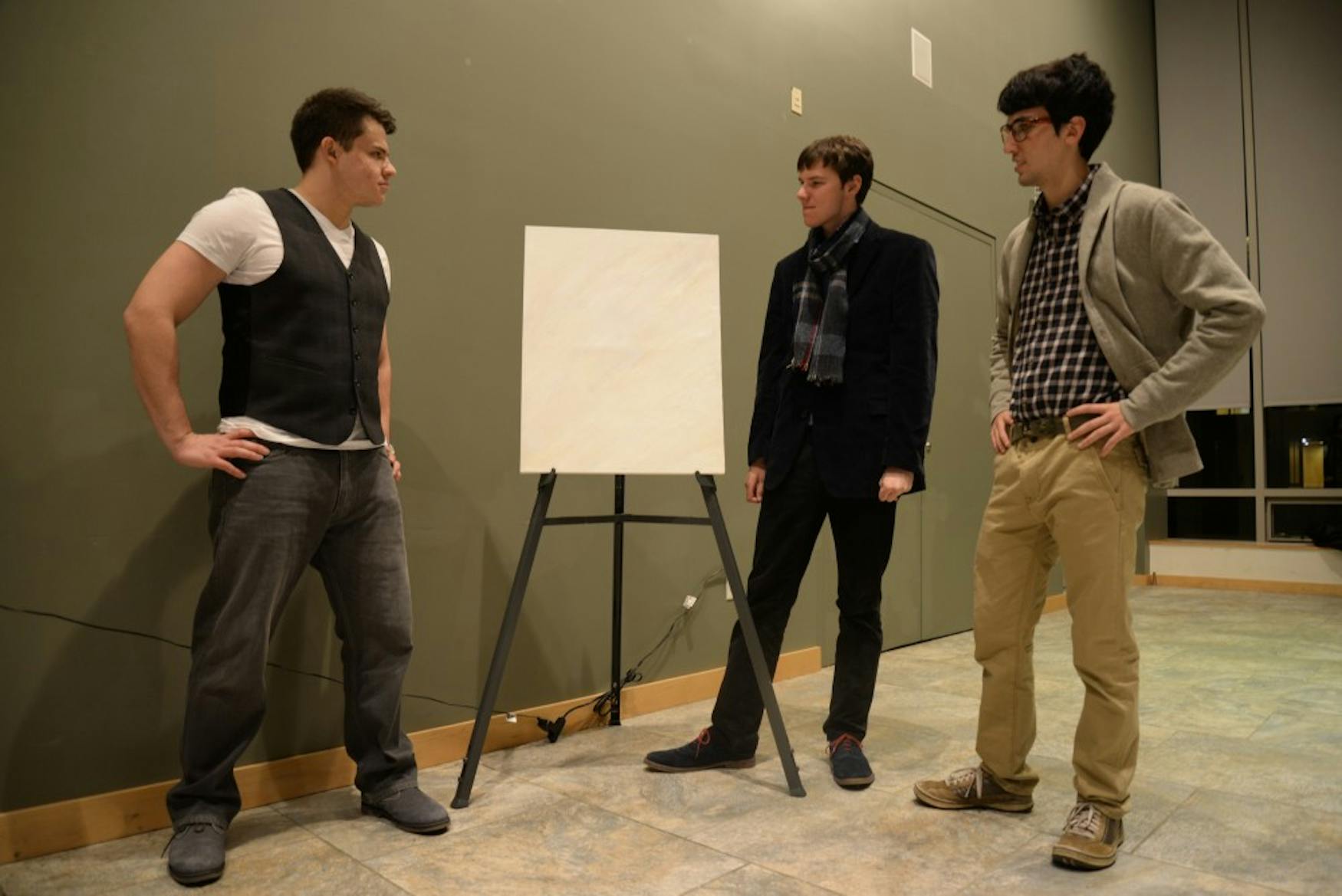‘Art’ excels with nuanced characters and dialogue
Entering South Campus commons, I saw two rings of chairs in the center of what I would soon learn was the stage. The actors, dressed in the chic wardrobes of well-off 30-somethings, meandered from chair to chair, introducing themselves to the audience, entertaining those around me and making me a little uncomfortable.
This past weekend, Brandeis Ensemble Theater presented Art, written by French playwright Yasmina Reza. The play, directed by Aaron Ficher ’15, follows three old friends, Marc (Raphael Stigliano ’18), Serge (Dylan Hoffman ’18) and Yvan (Max Moran ’17), who find their 15-year-old friendship thoroughly shaken after Serge purchases a $200,000 modernist painting. Arguments erupt between the three regarding their tastes, temperaments and cultural paradigms as they realize more and more that they really seem to hate each other.
The plot, which is essentially one giant argument, and the setting, the various apartments of Serge, Yvan and Marc, never actually change. The combination of a less than concrete plot and a less than mobile setting can often lead to a less than thrilling show, but with the help of quick, biting dialogue, this wasn’t the case at all.
There was an excellent turnout for the closing show, which was at 8 p.m. Sunday night. It wasn’t hard to see why so many people wanted to see the show; the three actors performed their dialogue well, and their poses, hand gestures and voices flowed as naturally as a casual conversation.
Hoffman and Stigliano’s portrayal of Serge and Marc must have been particularly challenging. These two alpha characters demanded a range of emotions that swung from extreme anger to sadness to disbelief. Their dialogue was scholarly, bordering on pedantic, which can make believable and well-spoken execution difficult. But this wasn’t a problem for the two actors, who captured their characters perfectly. Their performances were spectacularly casual and seemed entirely real.
Moran’s portrayal of the neurotic Yvan presented its own challenges. Yvan is a character immediately presented as peripheral. The other characters describe him as “too tolerant,” saying that such a tolerance makes individual opinion impossible.
The universal punching bag, Yvan seems to be bullied by every other character in Art. This dynamic called for a more eccentric but equally powerful array of emotions in Yvan’s performance, and Moran delivered.
Holding the play in South Campus Commons gave the entire show a more relaxed atmosphere than it would have, had been held in a dark theater. The audience members felt free to chat with each other before and after the play.
The director’s note on the first page of the program asks the question, “Why do we bother with theater?” In this note, he compares theater to film and finally settles on the unique quality of theater: the relationship between actor and viewer.
This relationship was strong in the interactive format of this production. As the actors wandered around their stage, the audience became the furniture of their various apartments. We were part of the set. The connection with the artists and the audience made the show exciting and believable, but most importantly, it made the show affect me. As one character insulted another, I felt true sympathy for a truly fictional character, as if said character were my real friend.
As the show ended, the audience gave a huge round of applause. The characters left the stage but also left the audience with a lot to think about. In the end, Art was a well-directed, well-acted and well-received production.
Editor’s note: Max Moran ’17 is the forum editor of the Justice.



Please note All comments are eligible for publication in The Justice.